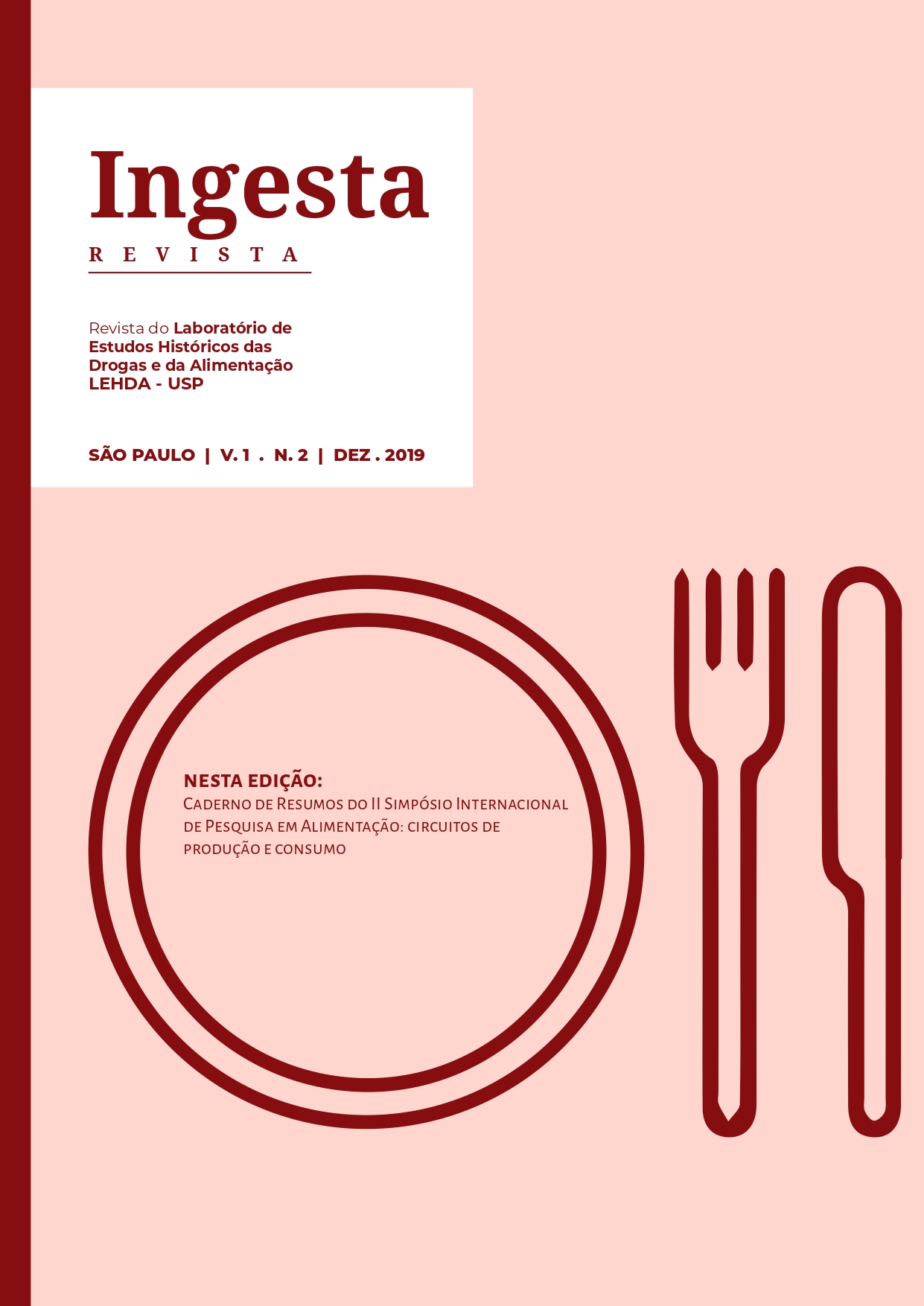Comer na rua
o consumo de alimentos no Rio de Janeiro do século XIX (1830-1860)
DOI:
https://doi.org/10.11606/issn.2596-3147.v1i2p167-168Palavras-chave:
Alimentação no espaço público, Gênero, Entretenimento, Trabalho, Abastecimento de alimentosResumo
Female street vendors were a common sight in cities worldwide in the first half of the 19th century. Fields of history like women’s history have dealt with the role of these street vendors in European cities. In recent decades, female street vendors have also been studied by a number of Brazilian scholars, who have shed light on urban slavery, domestic slavery and other forms of unfree labor. These studies commonly focus on community building among urban slaves and the formation of a West African diaspora. All around the globe female street vendors were (and still are) not merely passive victims of marginalization, but capable actors, who created a gendered niche of economic opportunity, through the capitalization of their cooking and vending skills. The popularity of female hawkers was closely connected to their being women.
Until now, few studies explore the food stalls in the city of Rio de Janeiro in the first half of the 19th century as special places of consumption within a global perspective. Street food gave rise to a working-class consumer culture. This study aims to focus on the social, material and imaginary aspects of these vending places. What role did they play within the consumer culture of Rio de Janeiro? What food did they provide? What was the communication between vendors and customers like? These questions are especially interesting to ask against the background of Rio de Janeiro’s intensive sociocultural transformation in the years between 1830 and 1860, after the official prohibition of the transatlantic slave trade.
Places of food consumption such as the Paris-style restaurant (representative of luxury dining) and taverns (representative of more commonplace, popular restaurants) saw a great increase in the first half of the 19th century.
Analyzing food stands as places of food consumption offers the possibility to break up the narrative of the male centered public sphere and show that women especially played a crucial role in providing 19th century cities with food. Daily newspapers, contemporary descriptions by foreign visitors and social novels demonstrate in an excellent manner the contemporary discourse of eating out, the dishes that were served, who consumed these dishes and female vendors in a global perspective.
The paper argues that eating out was not only a necessity for some, but also a form of entertainment comparable to professional theater plays. Food stands were places were gender roles, prejudices against foreign food and sexual honor were negotiated. Since cooking is one of the most time-consuming types of labor in history the paper combines food history with labor history and demonstrates public eating as a special form of entertainment.
Downloads
Downloads
Publicado
Edição
Seção
Licença
Autores que publicam nesta revista concordam com os seguintes termos:
- Autores mantém os direitos autorais e concedem à revista o direito de primeira publicação, com o trabalho simultaneamente licenciado sob a Licença Creative Commons Attribution que permite o compartilhamento do trabalho com reconhecimento da autoria e publicação inicial nesta revista.
- Autores têm autorização para assumir contratos adicionais separadamente, para distribuição não-exclusiva da versão do trabalho publicada nesta revista (ex.: publicar em repositório institucional ou como capítulo de livro), com reconhecimento de autoria e publicação inicial nesta revista.
- Autores têm permissão e são estimulados a publicar e distribuir seu trabalho online (ex.: em repositórios institucionais ou na sua página pessoal) a qualquer ponto antes ou durante o processo editorial, já que isso pode gerar alterações produtivas, bem como aumentar o impacto e a citação do trabalho publicado (Veja O Efeito do Acesso Livre).



